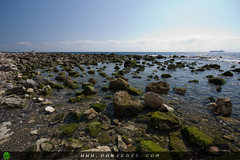How long have salmon been making the trek to the sea, the rivers and back again? We are all familiar with the image of salmon returning to fresh water, to the rivers of their youth, to spawn and complete their lifecycle, in fact, it is one of the staple images of British Columbia. As adults, we bring our children to witness this cycle, rushing to the banks of our local rivers to watch as the adults, keen in their fight for reproduction and survival, struggle to complete their epic journeys against currents and predators. Arriving as they do, year upon year, season upon season, it seems to us that this is how it has been since time immortal. But we now have evidence that migration to the sea may be a relatively recent behaviour.
Fossil beds at Driftwood Canyon, near Smithers, contain large numbers of fossil salmonid remains from the Eocene age, approximately 45 million years ago. What is interesting is that the fossil beds are filled equally with both juvenile and larger adults. If these salmon were heading off to sea in their juvenile form and returning to spawn as adults we would expect to find an abundance of larger carcasses in the lake sediments and relatively few juveniles.
Given the equal numbers, it looks likely that the salmonids of the Eocene, lived out their lifecycle as a landlocked species, the way Kokanee do today - so their migration to the sea is relatively recent and certainly after the most recent ice age.






Comments